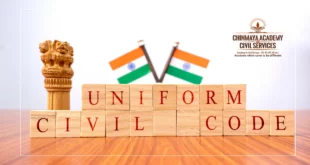As the recent majority judgment of the Supreme Court on demonetisation comes under criticism, the minority judgment by J. Nagarathna is being hailed for its challenge to the RBI’s institutional acquiescence to the Central government. This questions our blind acceptance of numerical majorities in judicial decision-making.
What is judicial majoritarianism?
- As opposed to standard matters heard by Division Benches consisting of two judges, numerical majorities are of particular importance to cases which involve a substantial interpretation of constitutional provisions.
- In such cases, Constitutional Benches, consisting of five or more judges, are set up in consonance with Article 145(3) of the Constitution.
- Such Benches usually consist of five, seven, nine, 11 or even 13 judges. This is done to facilitate decision-making by ensuring numerical majorities in judicial outcomes.
- The requirement for a majority consensus flows from Article 145(5) of the Constitution which states that no judgment in such cases can be delivered except with the concurrence of a majority of the judges but that judges are free to deliver dissenting judgments or opinions.
What is at the heart of the debate?
- As opposed to representatives of the people in legislatures who may act on hunches or popular perception, judges are experts of law and are aware of the arguments for and against the impugned matter. Given the same, Jeremy Waldron questions why is it that the judges too have to resort to head counting in order to resolve disagreements amongst judges.
- All judges on a particular Bench give their rulings on the same set of arguments and written submissions.
- In light of the same, any differences in judicial decisions can be attributed to a difference in either the methodology adopted and the logic applied by the judges, or, as proffered by the legal realists such as Jerome Frank, upon their own ‘judicial hunches’ which may be an outcome of their subjective experiences, outlook, and biases.
- In such circumstances, it is entirely possible that the majority may fall into either methodological fallacies and errors or be limited by their ‘judicial hunch’ respectively.
- In such situations, a meritorious minority decision, irrespective of the impeccability of its reasoning receives little weightage in terms of its outcomes. Our Constitutional history is replete with such meritorious dissents.
- The dissenting opinion of Justice H.R. Khanna in A.D.M. Jabalpur v. Shivkant Shukla (1976) upholding the right to life and personal liberty even during situations of constitutional exceptionalism is a prime example. Another example is the dissenting opinion of Justice Subba Rao in the Kharak Singh v. State of U.P. (1962) case upholding the right to privacy which received the judicial stamp of approval in the K.S. Puttaswamy v. UOI (2017) case.
- Moreover, the rate of dissent itself is subject to influences. To exemplify, Yogesh Pratap Singh, Afroz Alam, and, Akash Chandra Jauhari (2016) found that the rate of judicial dissent at the height of the Emergency in 1976 was a mere 1.27% as opposed to 10.52% in 1980.
- The study also found that the rate of dissent where the Chief Justice was a part of the Bench was lower than in those cases where the Chief Justice was not on the Bench.
- Such situations call into question the efficiency and desirability of head-counting procedures for a judicial determination on questions of national and constitutional importance.
What is the gap in our understanding?
- Ronald Dworkin proffers a system which may either give more weightage to the vote of senior judges given that they have more experience or to the junior judges as they may represent popular opinion better. Such alternatives, however, can only be explored once we identify and question the rationales which underlie head-counting in judicial decision-making.
- The absence of a critical discourse on judicial majoritarianism represents one of the most fundamental gaps in our knowledge regarding the functioning of our Supreme Court. As pending Constitutional Bench matters are listed for hearing, we must reflect upon the arguments of judicial majoritarianism on the basis of which these cases are to be decided.
SOURCE: THE HINDU, THE ECONOMIC TIMES, PIB
 Chinmaya IAS Academy – Current Affairs Chinmaya IAS Academy – Current Affairs
Chinmaya IAS Academy – Current Affairs Chinmaya IAS Academy – Current Affairs



